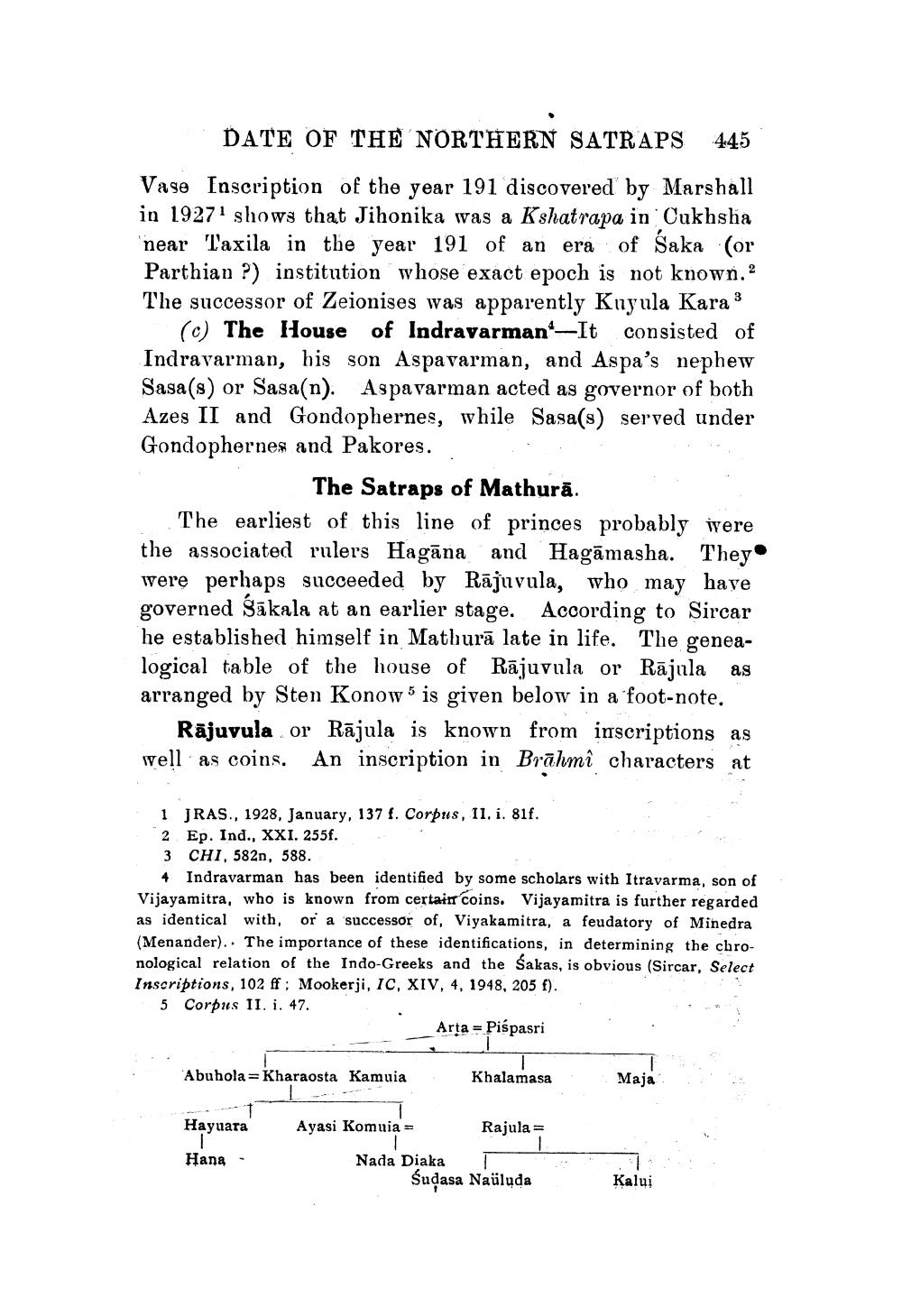________________
DATE OF THE NORTHERN SATRAPS 445 Vase Inscription of the year 191 discovered by Marshall in 1927' shows that Jihonika was a Kshatrapa in Cukhsha near Taxila in the year 191 of an era of Saka (or Parthian ?) institution whose exact epoch is not known.2 The successor of Zeionises was apparently Knyula Kara 3
(c) The House of Indravarmano-It consisted of Indravarman, his son Aspavarman, and Aspa's nephew Sasa(s) or Sasa(n). Aspavarman acted as governor of both Azes II and Gondophernes, while Sasa(s) served under Gondophernes and Pakores.
The Satraps of Mathurā. The earliest of this line of princes probably were the associated rulers Hagāna and Hagāmasha. They were perhaps succeeded by Rājuvula, who may have governed Sākala at an earlier stage. According to Sircar he established himself in Mathurā late in life. The genealogical table of the house of Rājuvula or Rājula as arranged by Sten Konows is given below in a foot-note.
Rājuvula or Rājula is known from inscriptions as well as coins. An inscription in Brāhmî characters at
1 JRAS., 1928, January, 137 f. Corpus, 11. i. 81f. 2 Ep. Ind., XXI. 255f. 3 CHI, 582n, 588.
4 Indravarman has been identified by some scholars with Itravarma, son of Vijayamitra, who is known from certain coins. Vijayamitra is further regarded as identical with, or a successor of, Viyakamitra, a feudatory of Minedra (Menander).. The importance of these identifications, in determining the chronological relation of the Indo-Greeks and the Sakas, is obvious (Sircar, Select Inscriptions, 102 ff ; Mookerji, IC, XIV, 4, 1948, 205 f). 5 Corpus II. i. 47.
Arta = Piśpasri
Abuhola=Kharaosta Kamuia
Khalamasa
Maja
Hayuara
Hana -
Ayasi Komuia = Rajula = Nada Diaka
sudasa Naüluda
Kalui




